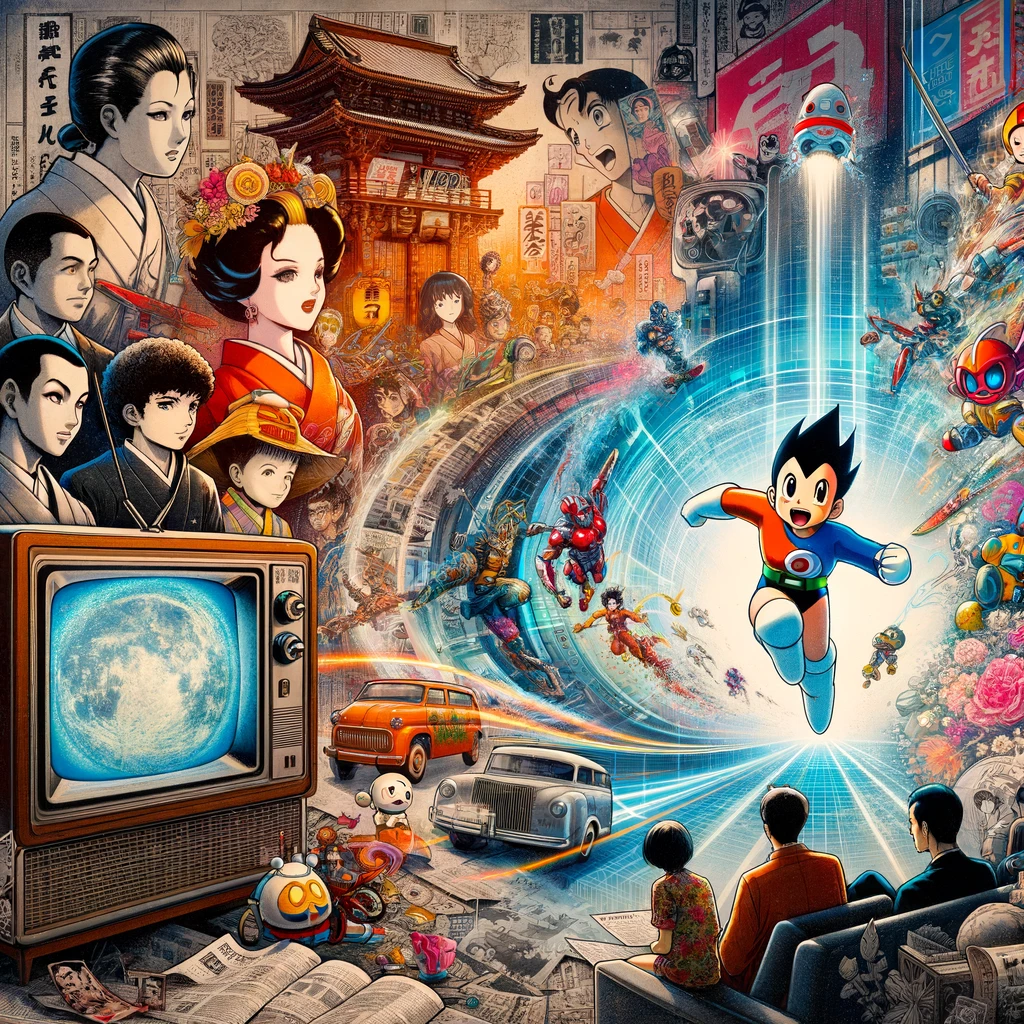Summary
Anime, a distinctive form of animation that hails from Japan, has evolved from its early 20th-century roots to become a global cultural phenomenon. This article traces the history of anime, from its origins in Japanese manga and early animations to its international breakthrough in the 1990s and its status today as a major force in global entertainment. Highlighting key milestones, influential figures, and groundbreaking series and films, we explore how anime has expanded its audience worldwide, pushed the boundaries of storytelling and art, and continues to evolve in the digital age.
Introduction
Anime, or Japanese animation, has captured the imagination of audiences around the world, transcending cultural and linguistic barriers. Originating in Japan, anime has a distinct style and encompasses a wide range of genres, making it a versatile and captivating art form. This article delves into the evolution of anime, charting its growth from a niche artistic endeavor to a cornerstone of global pop culture.
The Early Beginnings
- Origins: Discuss the early 20th-century experiments in animation in Japan, including works considered to be the first anime.
- Post-War Era: How post-WWII Japan used anime for entertainment and education, leading to the establishment of the anime industry.
The Rise of Anime in Japan
- Astro Boy and Osamu Tezuka: The impact of “Astro Boy” and how Tezuka is considered the “father of anime.”
- Expansion of Genres: Introduction of genres like mecha, shojo (targeted at young girls), and shonen (targeted at young boys), each contributing to anime’s growing popularity.
International Breakthrough
- 1980s and 1990s: How series like “Dragon Ball” and films like “Akira” introduced anime to international audiences.
- Cultural Exchange: The role of early fan translations (fansubs) and the internet in spreading anime globally.
The Studio Ghibli Phenomenon
- Hayao Miyazaki and Studio Ghibli: The universal appeal of Ghibli films, their themes, and their impact on international perceptions of anime.
- Critical Acclaim: Achievements of Studio Ghibli, including Oscar wins and global recognition.
The Digital Age and Global Spread
- Streaming Services: How platforms like Netflix and Crunchyroll have made anime more accessible worldwide.
- Changing Production: The effects of digital animation techniques and international co-productions on the anime industry.
Contemporary Anime
- Recent Trends: Examination of current popular genres and themes, such as isekai and the incorporation of sophisticated storytelling and animation techniques.
- Global Community: The role of social media and online communities in shaping anime culture and fandom.
Challenges and Controversies
- Industry Issues: Discuss the challenges facing the anime industry, including labor conditions and copyright concerns.
- Cultural Sensitivities: How anime navigates global markets and cultural differences, addressing both successes and controversies.
Future Directions
- Technological Innovations: Speculate on the impact of emerging technologies like VR and AI on anime production and consumption.
- Global Collaborations: The potential for increased international collaborations and original content creation outside Japan.
Conclusion
Anime has come a long way from its humble beginnings to become a global cultural icon. Its evolution reflects broader changes in technology, society, and media consumption. As anime continues to adapt and grow, it promises to bring new stories, characters, and innovations to audiences worldwide, maintaining its position as a beloved form of entertainment and art.
